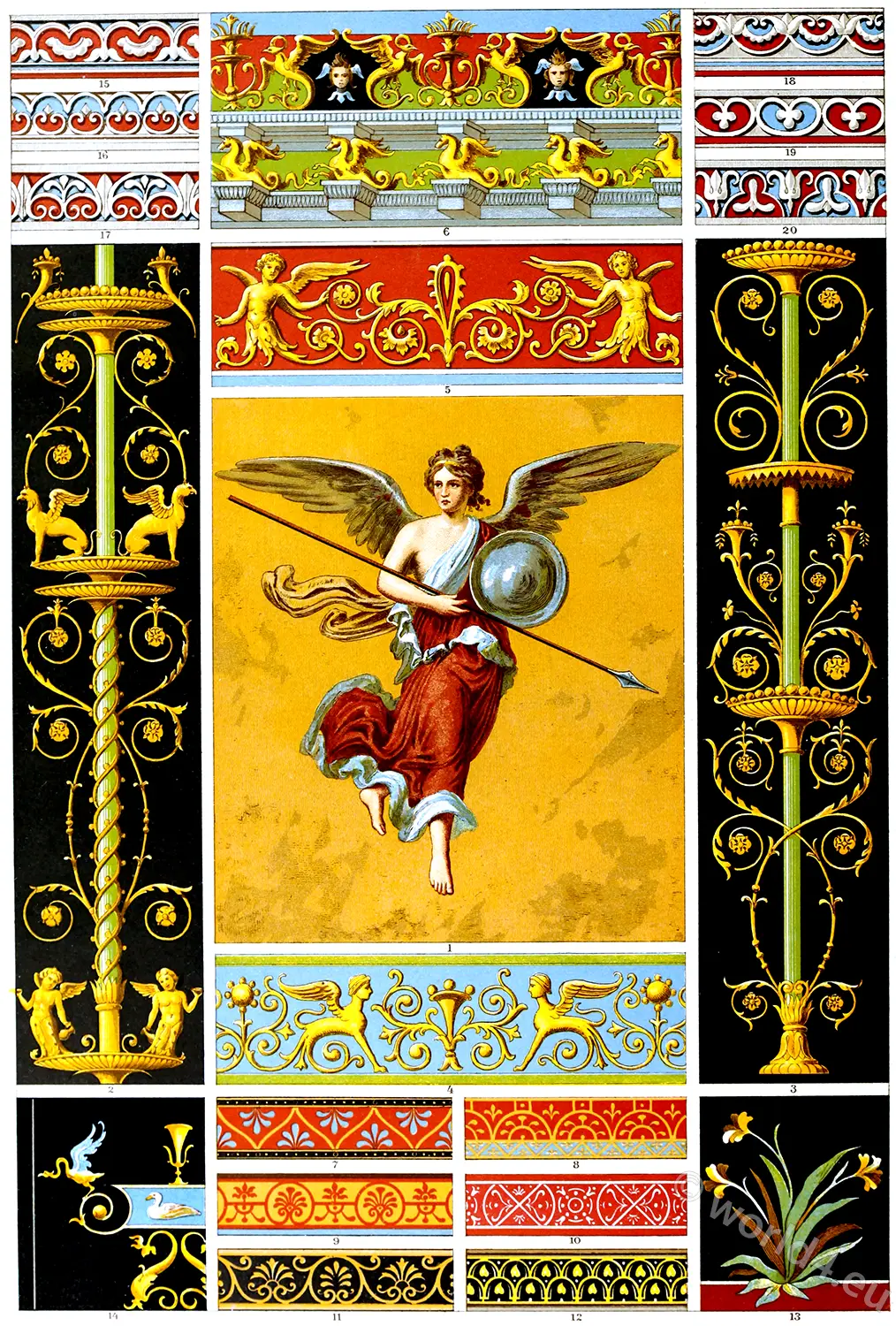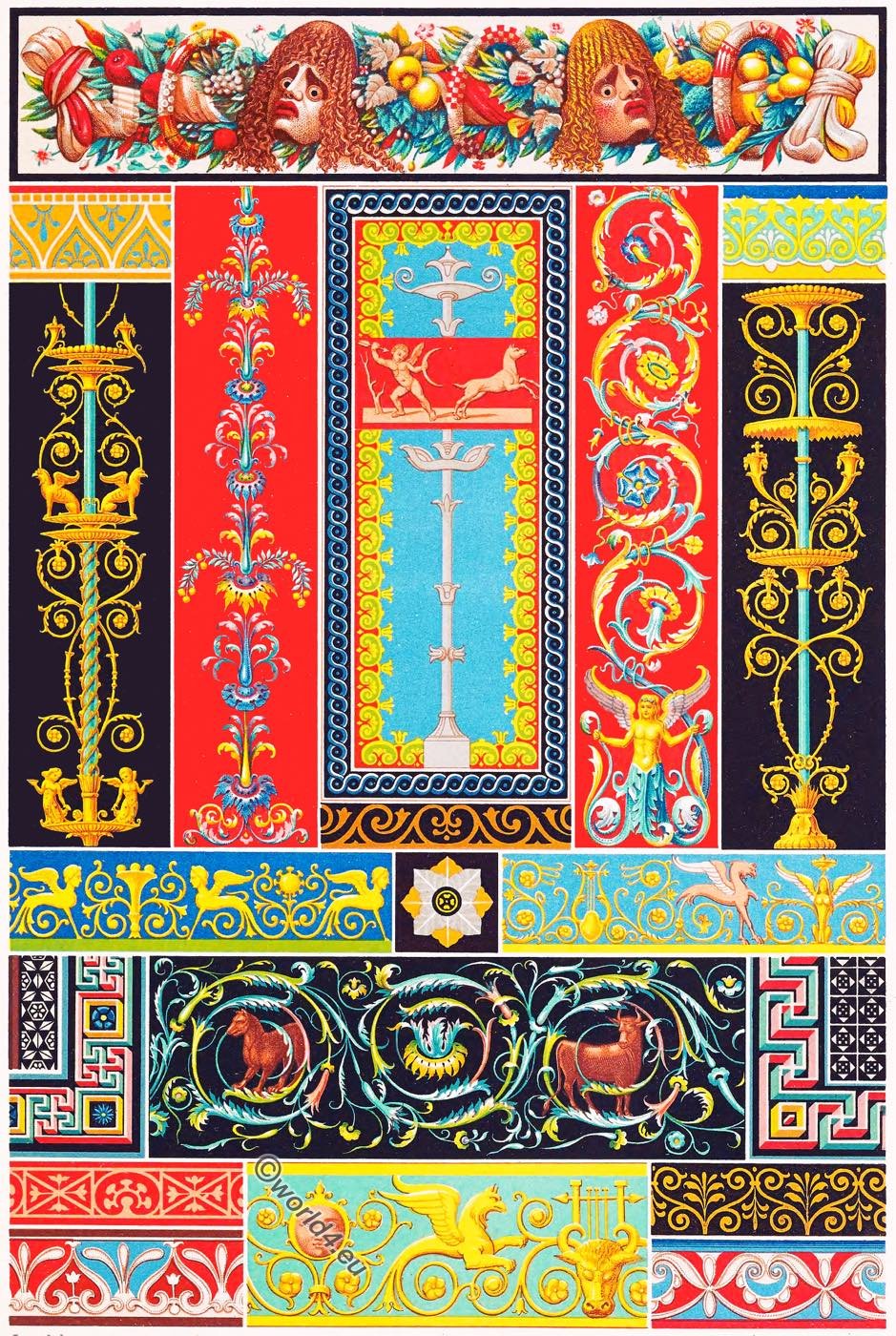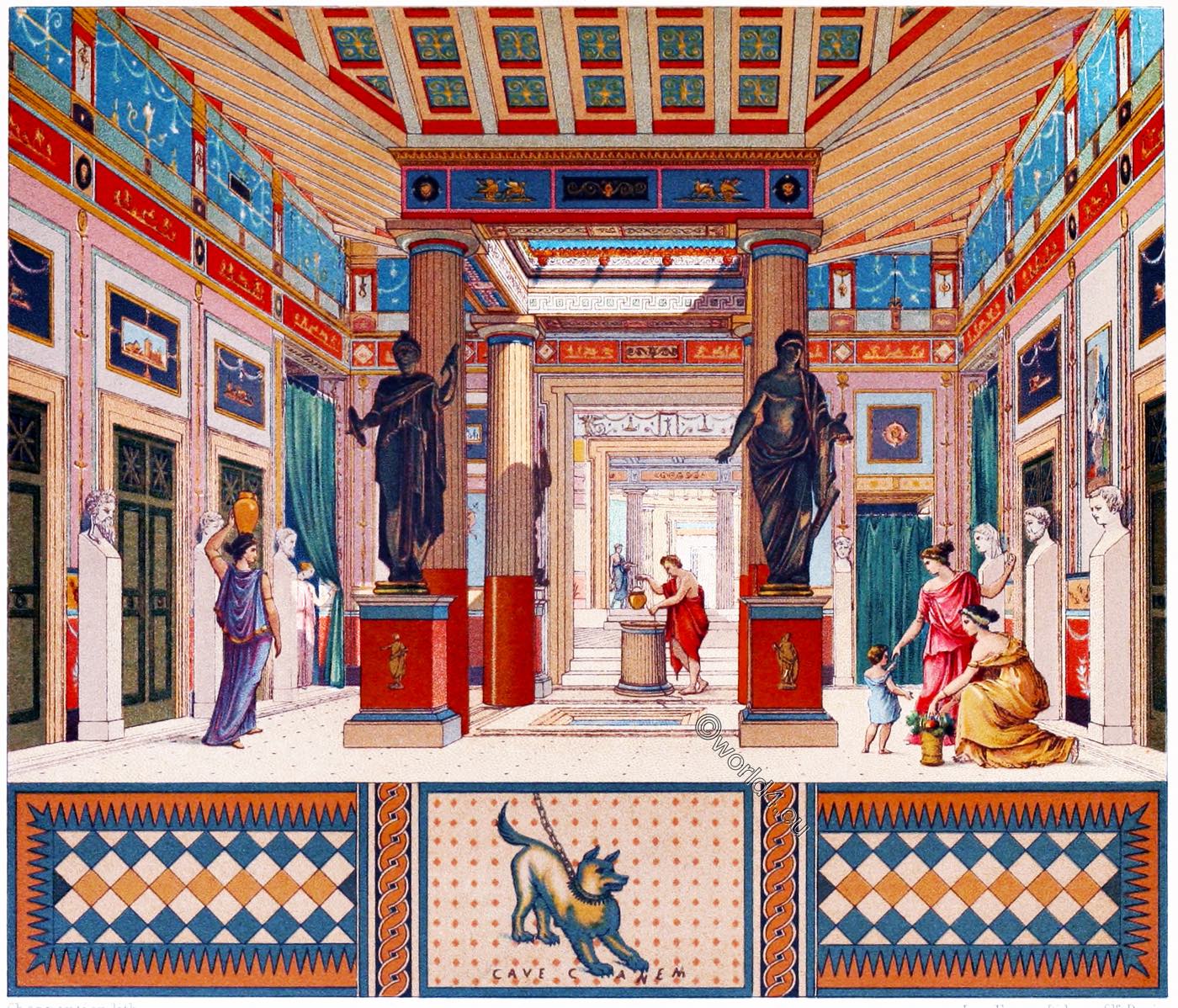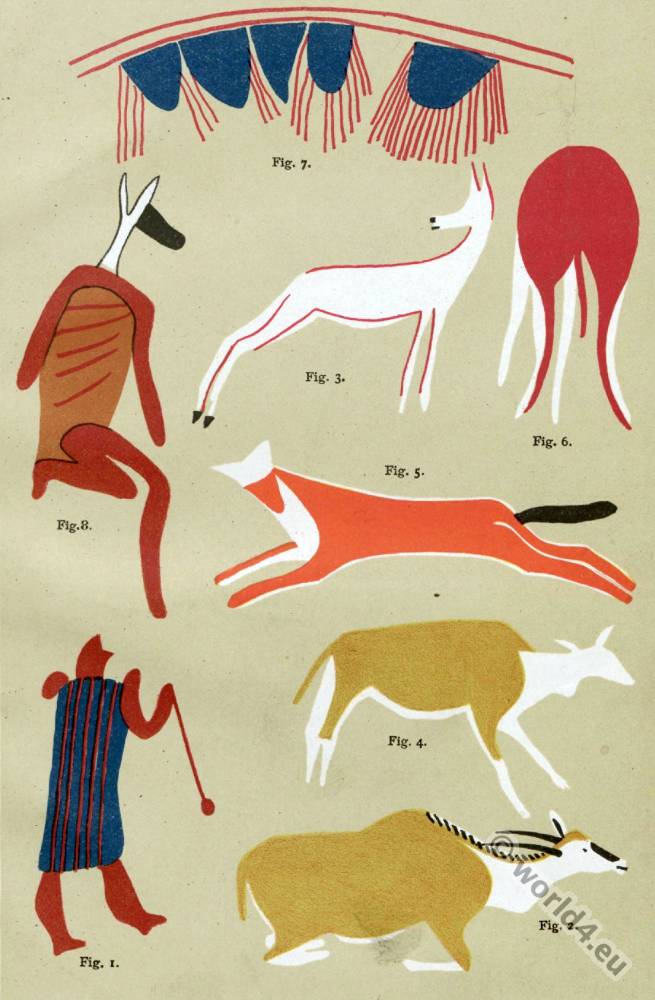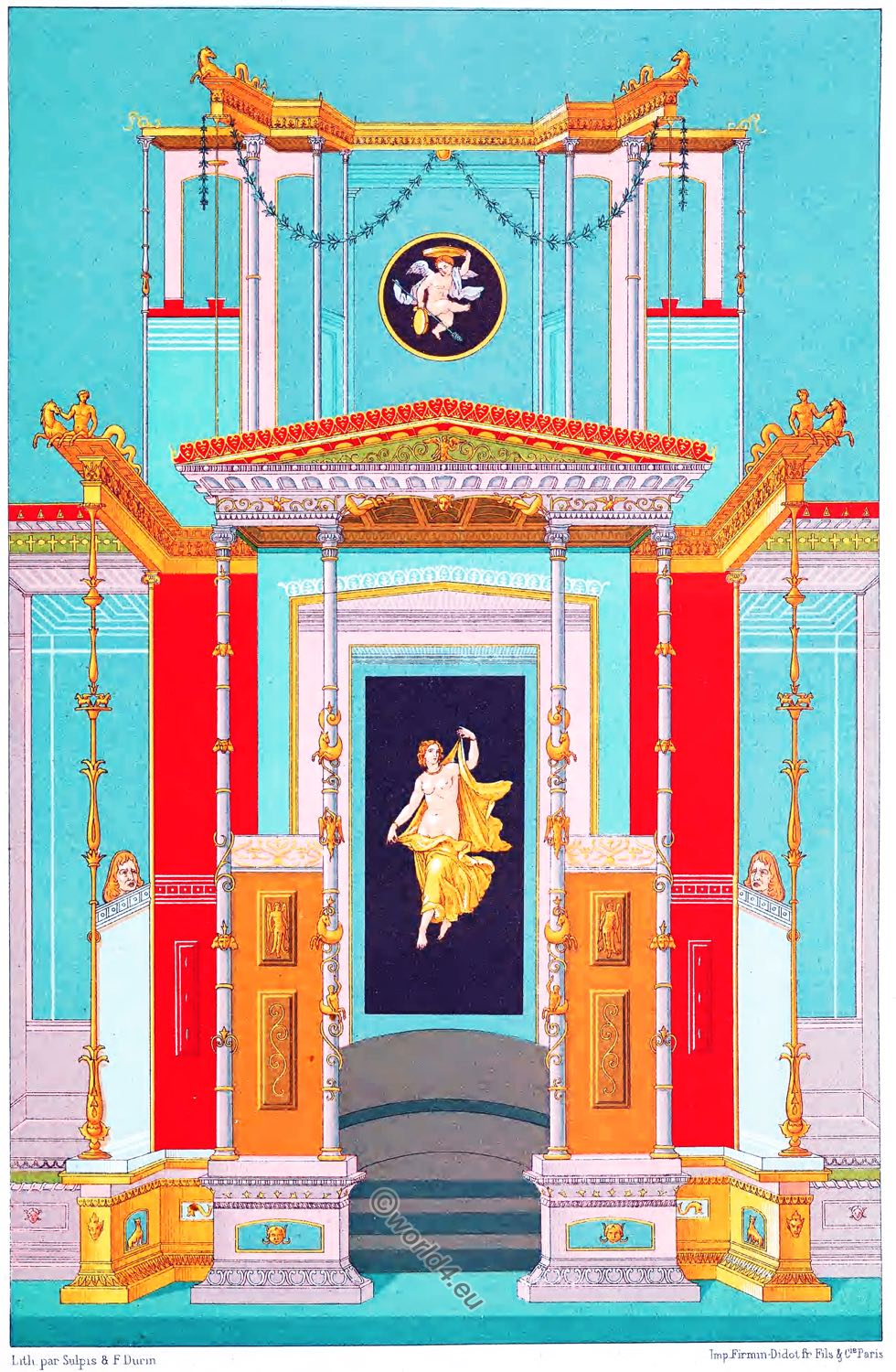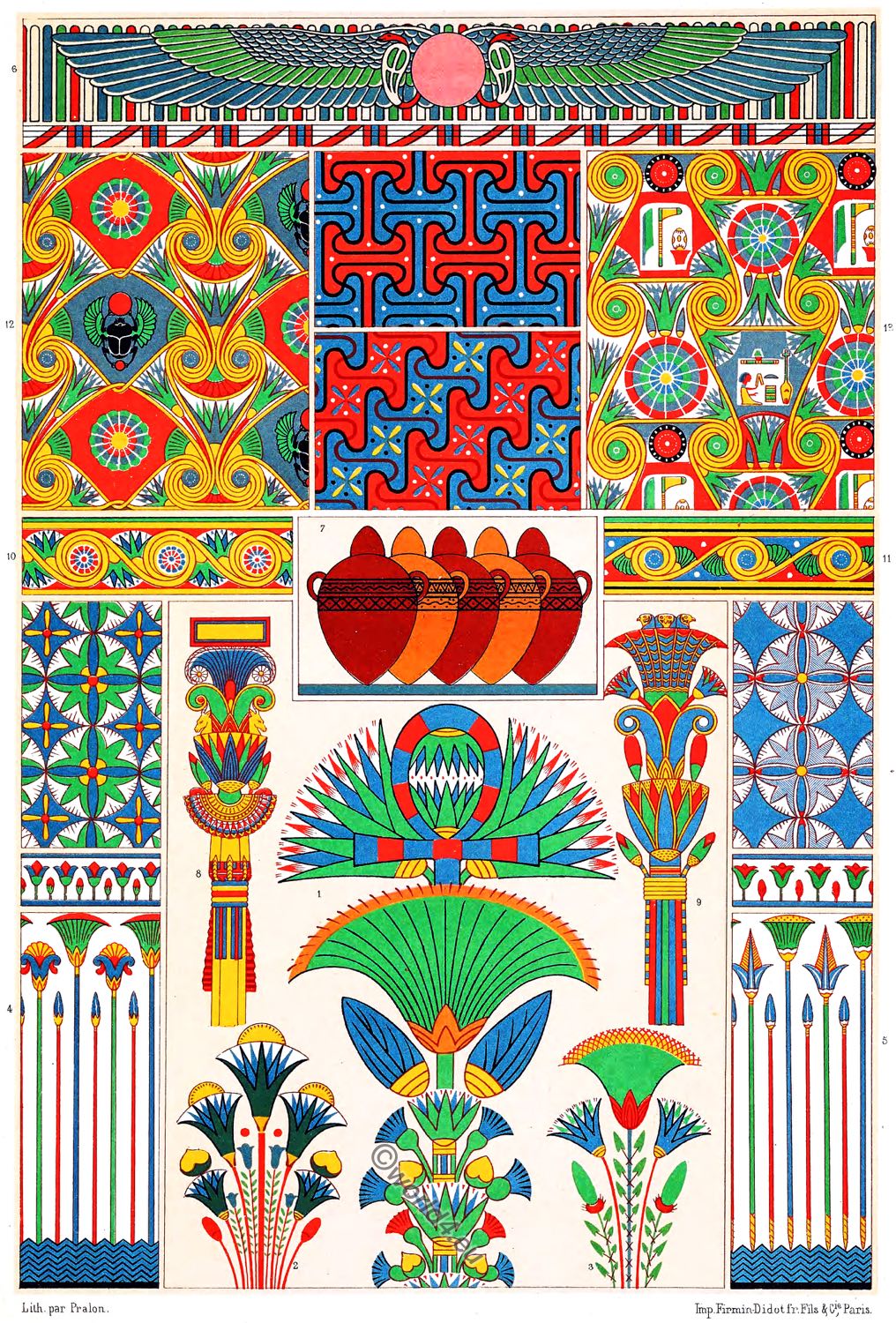Fig. 1. Wall painting, representing a figure of Victory, from Pompeii.
„ 2 and 3. Colonnettes, in the Museum at Naples.
„ 4 and 5. Borders from Pompeii.
„ 6. Frieze from Pompeii (drawn by H. Dolmetsch).
„ 7 — 12. Borders from Herculaneum and Pompeii.
„ 13 and 14. Painted dados from Pompeii.
„ 15 — 20. Cornices, executed in stucco and painted, Pompeii (drawn by H. Dolmetsch).
„ 21. Fresco painting from Pompeii imitating architectural features.
Pompeian. Wall paintings and Polychrome basso relieves.
Also called (Italian): basso rilievo
The wall paintings found at Pompeii, Herculaneum and Stabiae as well as at Rome, serving in the first place for decorative purposes only, give us some idea of the lost Grecian painting; for probably most of them are reproductions of originals of Greek masters, although they are executed in a free-hand manner and impressed with the splendour-loving spirit of the Romans. — These pictures are usually painted al fresco in cheerful colours by mere artisans, but with admirable artistic feeling and bold mastership.
The apartments of the Pompeian houses are all without windows; the walls, being covered with lofty architectural designs, suggest the idea of increased size of the room. They are divided into a dado, a middle and an upper compartment. The dado generally, has a black ground with simple ornaments or linear decorations; the purple, green, blue or yellow ground of the middle space is enlivened with one or more figures, landscapes, etc., between pretty ornamental borders. The upper space is mostly white, enlivened with graceful scenes in various colours. There are, however, apartments, the walls of which begin with yellow dados and terminate with black friezes. Besides very rich arabesques, there are garlands, fruit, masks, candelabra, animals, suspended arms, etc. which, imitating nature with great fidelity, arrest the eyes of the beholder. — The most favourite plants were ivy and vine-branches, laurel, myrtle, cypress, olive and palm.
The walls usually terminated at the top in a small painted stucco-cornice, from which the ceiling rose. The latter, frequently vaulted, was decorated with graceful variegated linear-ornaments on a light-coloured ground, or, often, with coloured stucco.
Source: Ornamental treasures: a collection of designs from India, China, Japan, Italy, Germany, France. etc., of all styles and times by Heinrich Dolmetsch. New York: R. Davis 1912.
Discover more from World4 Costume Culture History
Subscribe to get the latest posts sent to your email.

